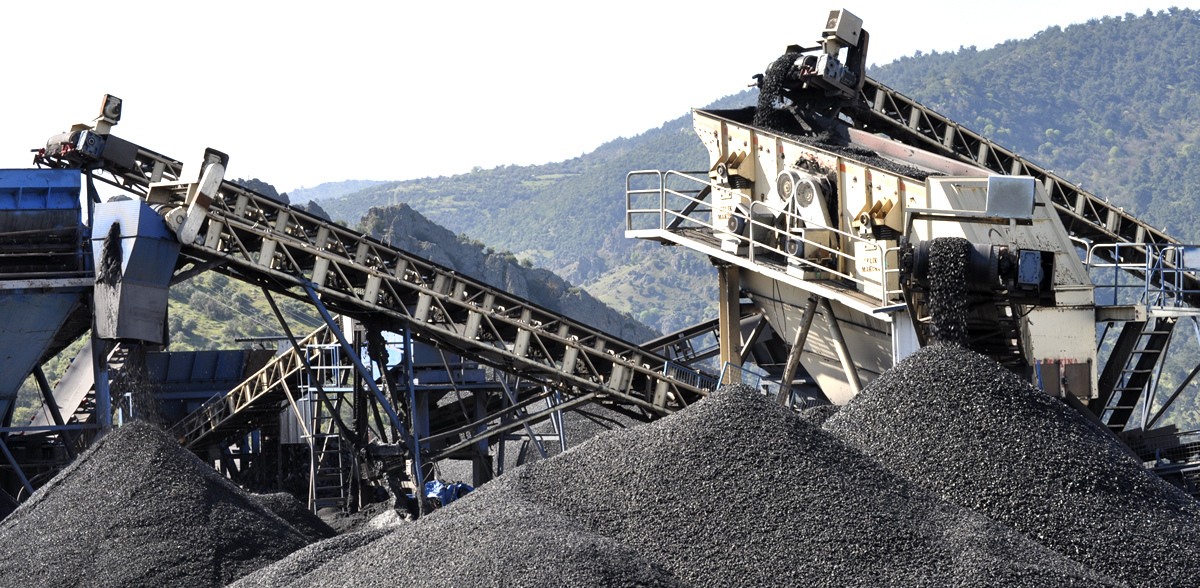
What Is Coal?
Coal is a solid, dark-colored rock rich in carbon and combustible gases found in layered sedimentary deposits. Coal is mostly composed of varying amounts of other elements. Its main component is carbon; it also contains variable amounts of hydrogen, sulfur, oxygen and nitrogen. Coal, a fossil fuel burned for heat, provides about a quarter of the world's primary energy and two-fifths of its electricity.
Coal is an organic fuel. That means it is composed of living beings. As plant and animal residues stratify and crumble over time, the coalification process begins.
Over time, the layers stacked on top of each other pressurize the layers below. Under such pressure, the carbon elements become more compact over time and coalification occurs.
Coalification Processes
Coalification processes are as follows:
- Peat
- Lignite
- Sub-bituminous coal
- Bituminous coal
- Anthracite
- Graphite
Türkiye's Coal Potential
Türkiye has only a sufficient amount of lignite coal potential in terms of solid fossil energy raw materials. Since other primary energy raw materials cannot meet the demand, the deficit in the demand is sought to be covered with lignite coal. Consequently, Türkiye's lignite potential is consumed in various fields such as electricity generation, ammonia synthesis, household and industrial fuel.
Türkiye has a lignite potential of approximately 7.8 billion tons based on the latest data. It is estimated that 4.7 billion tons of this potential is operable.
Polyakeynez Mining in Lignite Coal
Geology & Reserves in the region where Polyakeynez Mining is located : The Miocene-aged Soma coal basin was formed within the remnants of a small intramontane (mountainous region) basin in the Western Anatolia Graben Complex (WAGC), which covers an area about 150 km wide. The Miocene-aged, dimensionally deformed sediments of the Soma coal basin are unconformably overlain by early Cenozoic and older clastic/carbonate rocks of the Izmir-Ankara Zone. The Soma coal basin, located near the North Aegean coastline of Western Anatolia, exposes Miocene alluvial / flux-lacustrine deposits consisting of three consecutive lignite (Lower, Middle and Upper) seams. The total thickness of the coal sequences and overburden is approximately 900 m and the coal is unconformably overlain by Mesozoic carbonate/siliciclastic basement rocks. The lower coal seam (KM2) was formed in a lignitic type with an average thickness of 20 m in an alluvial plane.
Based on the JORC reserve code, the total resource and potential of the mine site is estimated to be approximately 225 million tons for the mine lifespan. The coal produced is extracted from the underground with an average calorific value of 3000 kCal / kg and becomes suitable for domestic heating and industrial use after the lavvar (coal washing) process. The calorific value of KM2 coal in the Kinik lignite field can reach up to 6,000 kcal. Therefore, the coal in the site can be considered as sub-bituminous coal, not lignite in accordance with the literature. The specific weight of the ideal lower bituminous coal is 1.35 t/m3. The average coal density to be produced in the site is determined as 1.63 t/m³.
Som Solid Fuel Coals
Som Solid Fuel offers washed coal, which has the potential to be used instead of imported coal with <1% sulfur content, with a distribution of +18-100 mm Walnut coal, 10-18 mm Hazelnut coal and 0.5-10 mm Powder coal with various caloric fractions in bagged or open form.




